Sunrise on Saturday, February 8, 2025
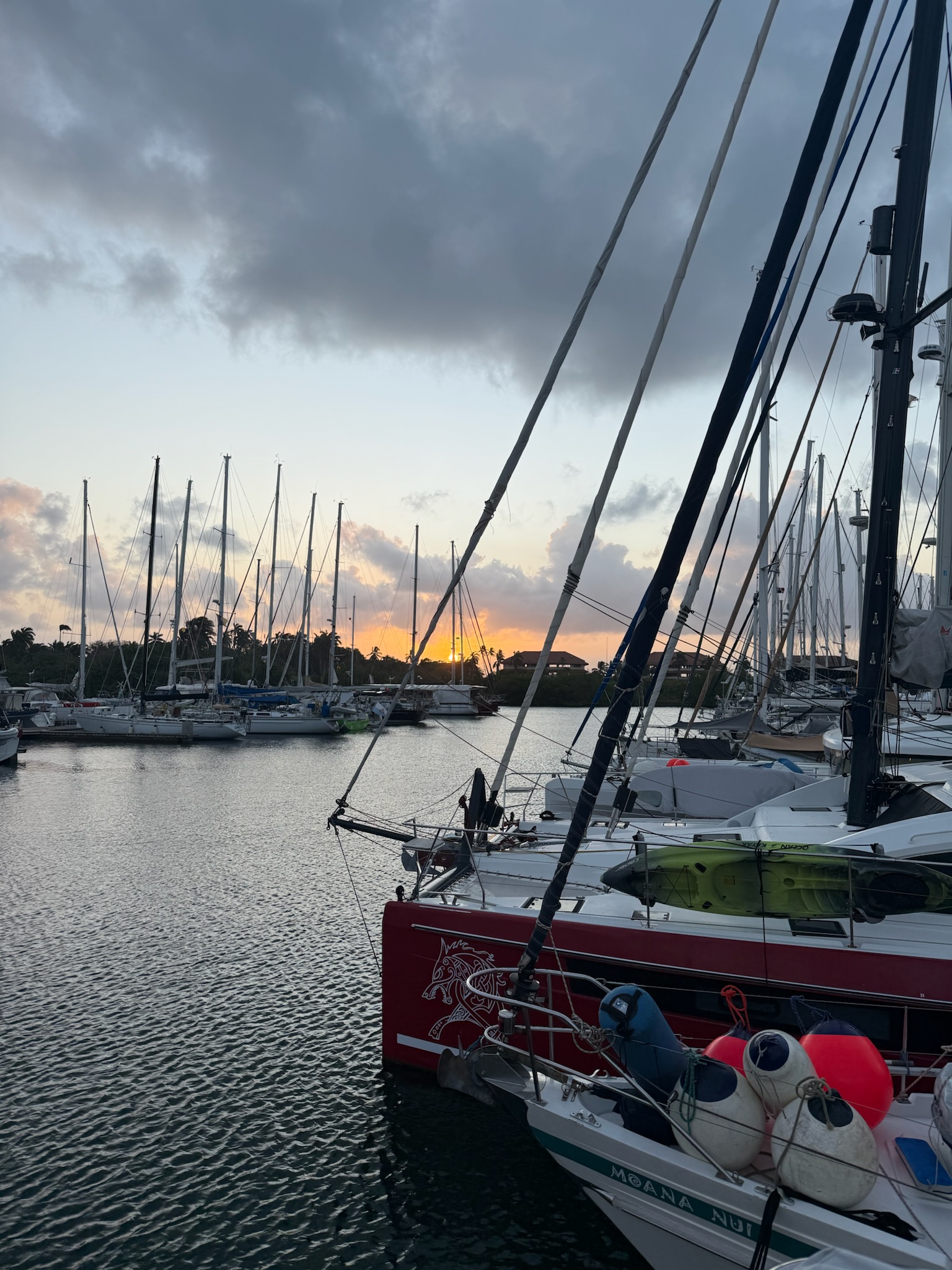
We decided to visit the Castillo de San Lorenzo el Real del Chagres, which are the remains of a Spanish fort from the colonial era. It’s located at the mouth of the Chagres river in the San Lorenzo national forest, just a ten-minute drive from the marina. Taxis hang out at the marina, so catching a taxi to the fort was easy. However, taxis don’t hang out at the fort, so getting a taxi back out would be challenging. We were advised to pay our taxi driver to wait for us at the fort to ensure a ride back out. He charged us $35 for the round trip, including a wait time of up to 1.5 hours.
The parking lot was situated along the edge of the Chagres river, with lovely views. There were areas that were closed off and covered with tarp that were apparently currently under excavation. A sign said that we were standing on what had been part of the town of Chagres, which had co-existed alongside each iteration of the fort.
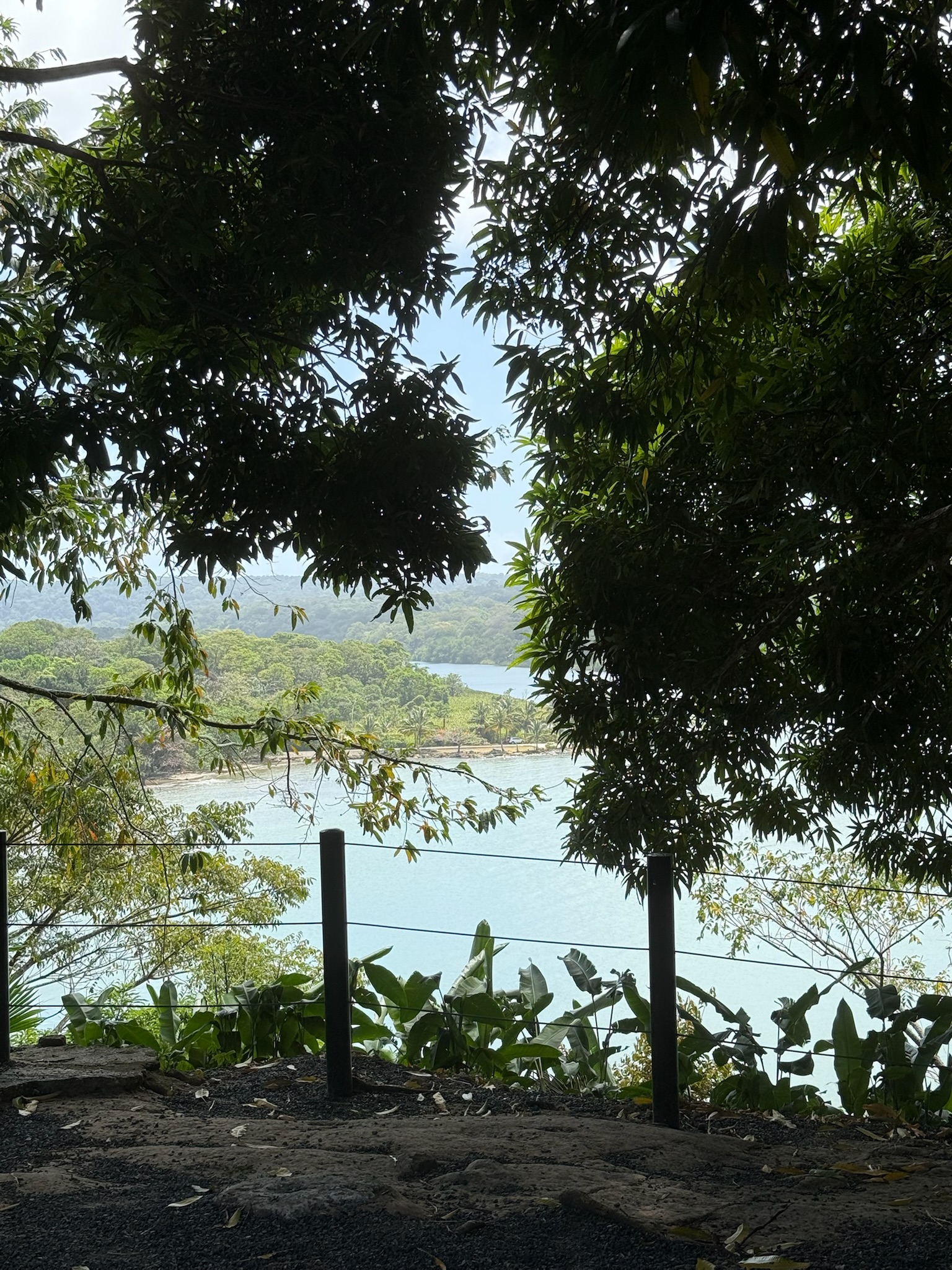
We purchased tickets. There was a TV set up near the ticket booth, and we were encouraged to watch a short film which gave a quick overview of the history of the fort before entering the fort itself.
Construction on the original fort began in 1595 to protect the Chagres river, which at the time, was part of the South American trade route through Panama City (cargo would be walked from various regions to Panama City, then walked to the town of Cruces, then put on a boat and taken down the Chagres to the Atlantic). The fort was destroyed three times by pirates/colonial enemies. It was rebuilt each time, so there were four versions of the fort in all. This iteration was built in the 1760s. This iteration was never attacked, as it lost importance soon after when the Spaniards decided that it was better to sail around the horn of South America to get to/from the Pacific rather than to take the shortcut through Panama. In 1980, the fort became a UNESCO World Heritage Sites.
Between the parking lot and the grass field was a tree with one of the longest single branches we’d ever seen! The branch in the upper left corner that is growing towards the tree is the same branch that is along the ground — the part missing from the photo is where it arcs upward into a big sideways U. We’re pretty sure that the one branch is longer than the tree is tall.
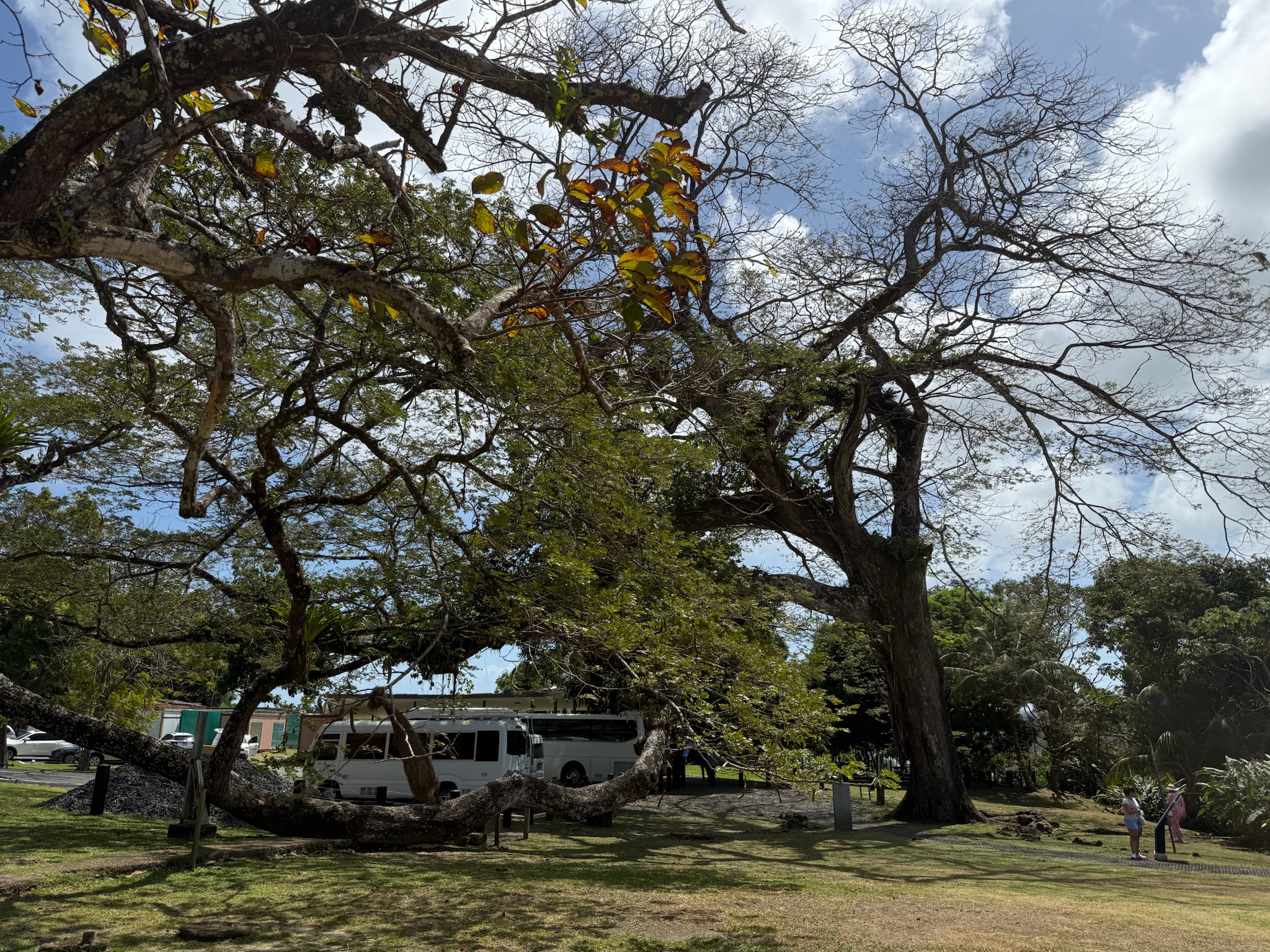
We crossed the grass field to the entrance. From the distance, the fort was picturesque.
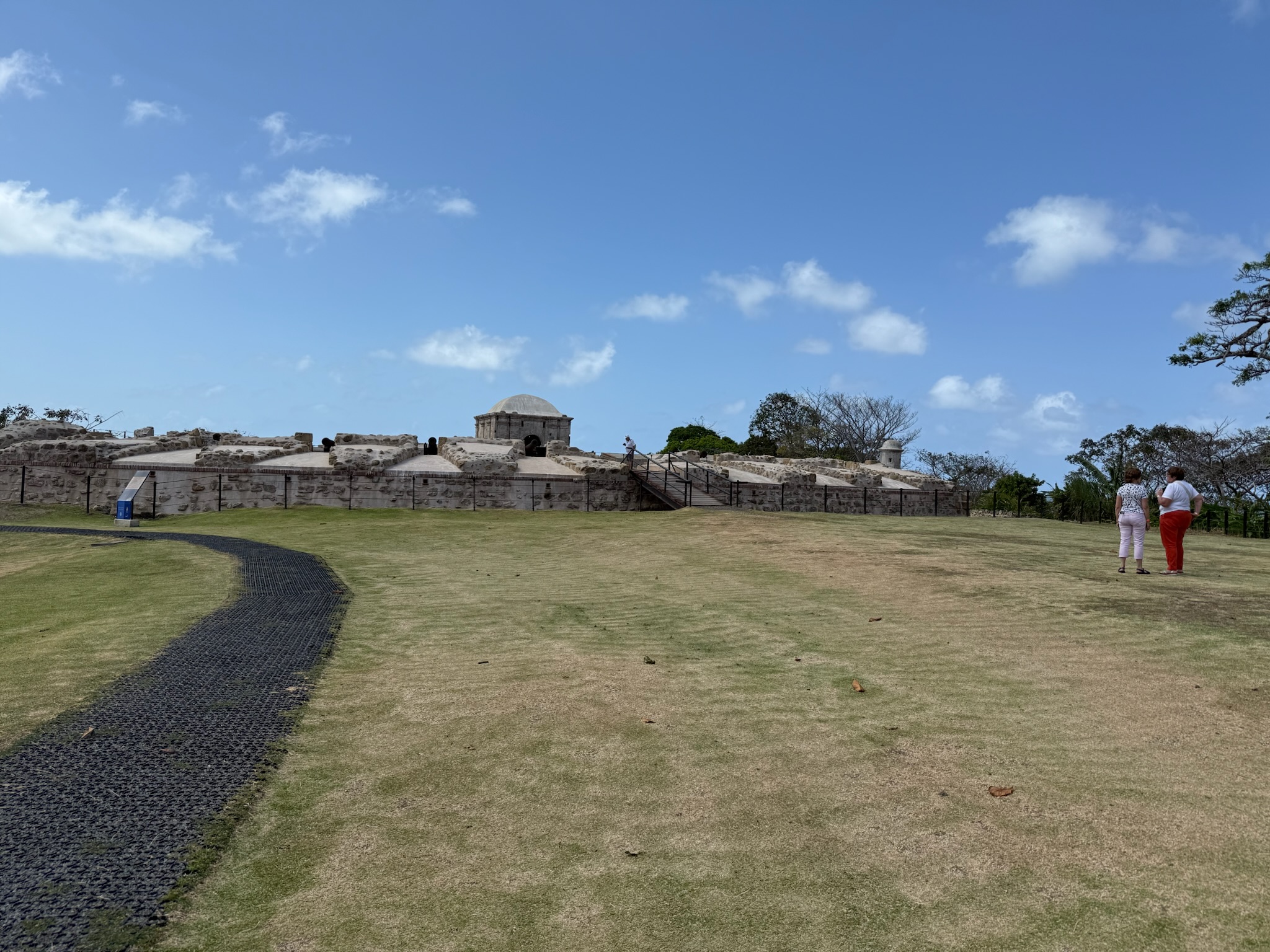
It appeared to be a semi-circle built of stone, had a dry moat with drawbridge and there were canons poking out from indentions along the top. It felt like something out of a medieval tale.
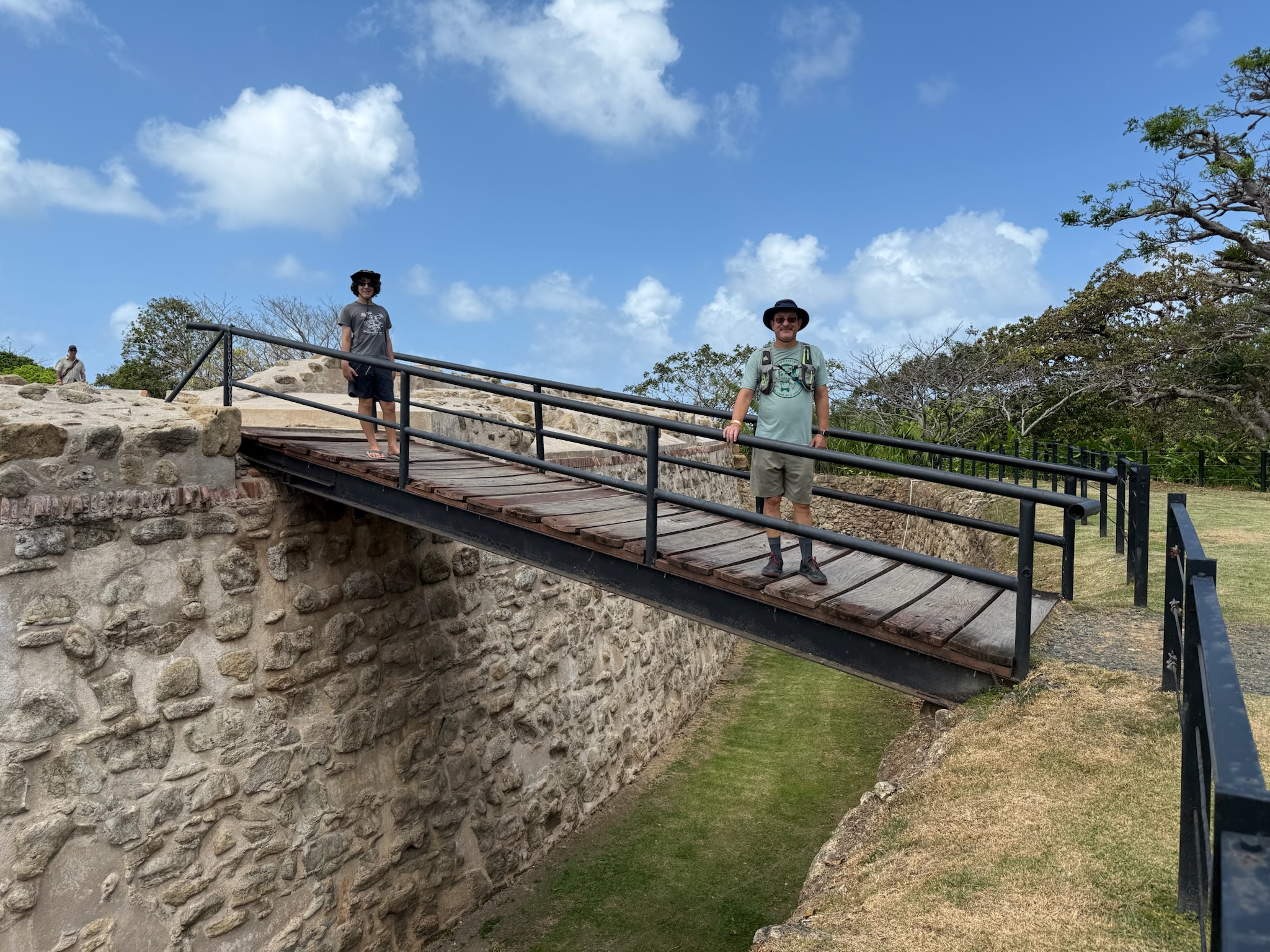
The entrance area just beyond the drawbridge – called the lunette — was lined with cannons. This was the first line of defense from attacks from the mainland. The sign said the moats were 290 linear meters long and 3 meters deep, and that the canons could shoot 1200 meters.
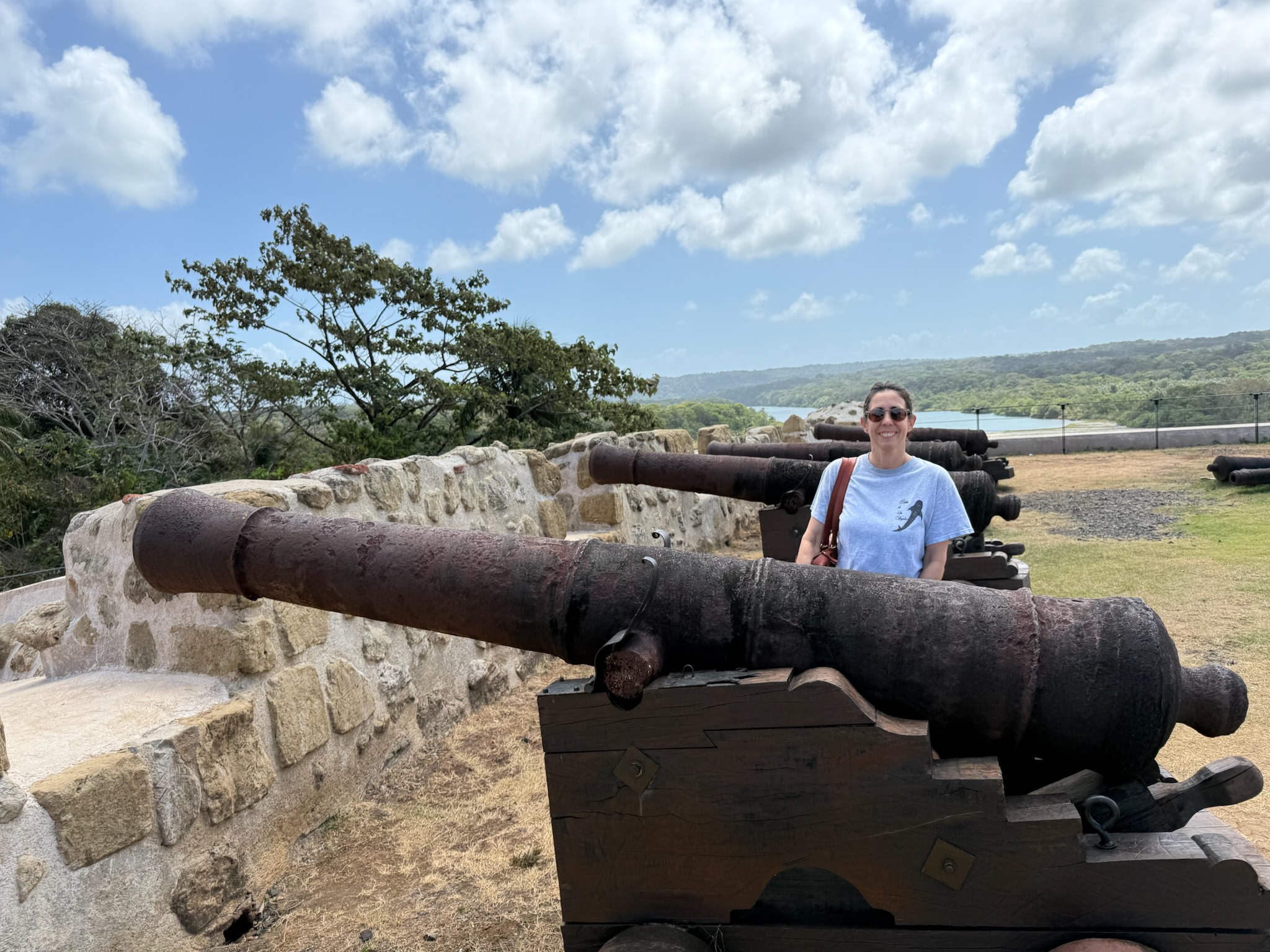
Behind the lunette was a second dry moat, with a walkway over it that led into the hornwork.
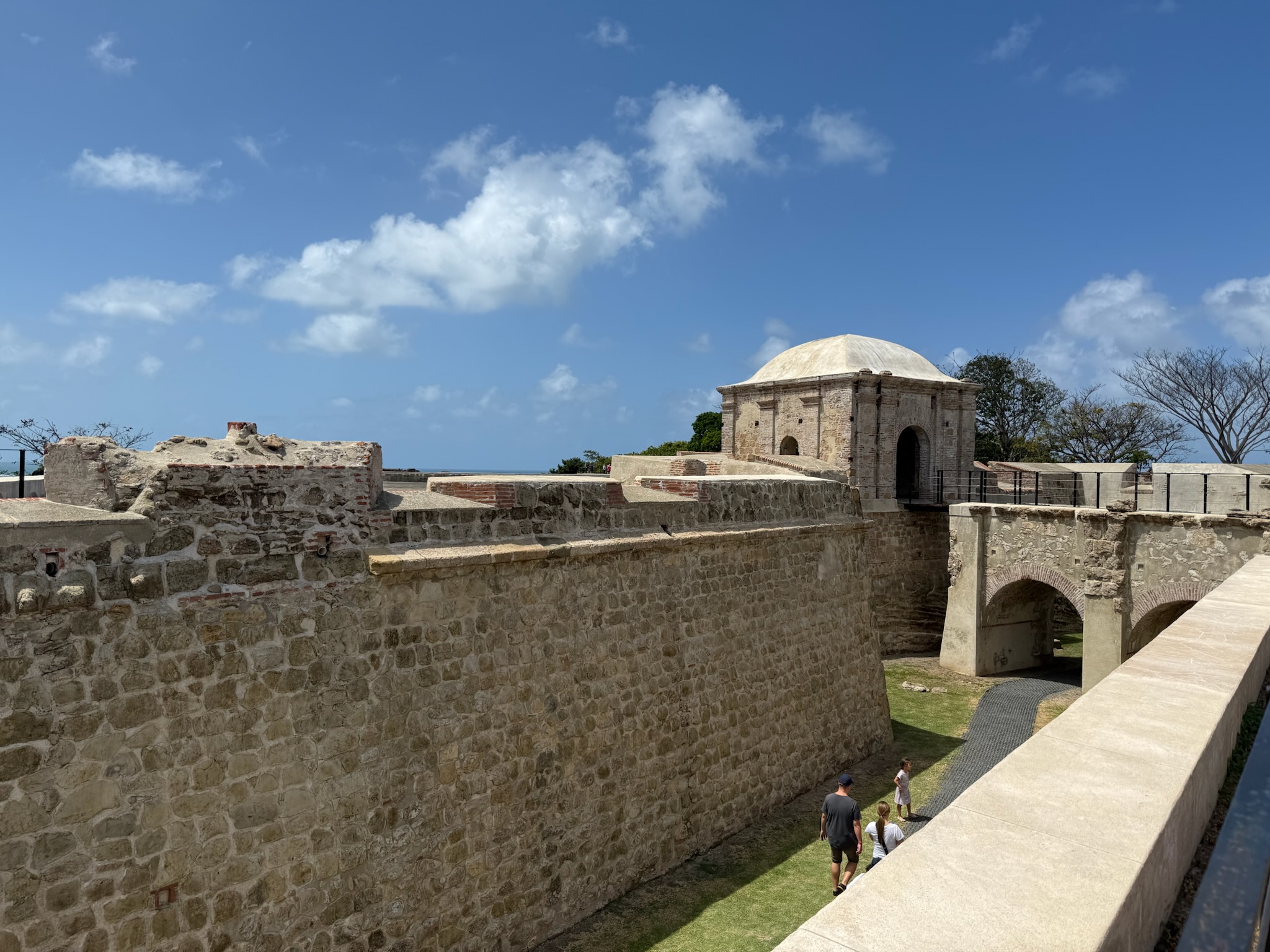
The is covered entry to the hornwork was apparently where the drawbridge controls had been located.
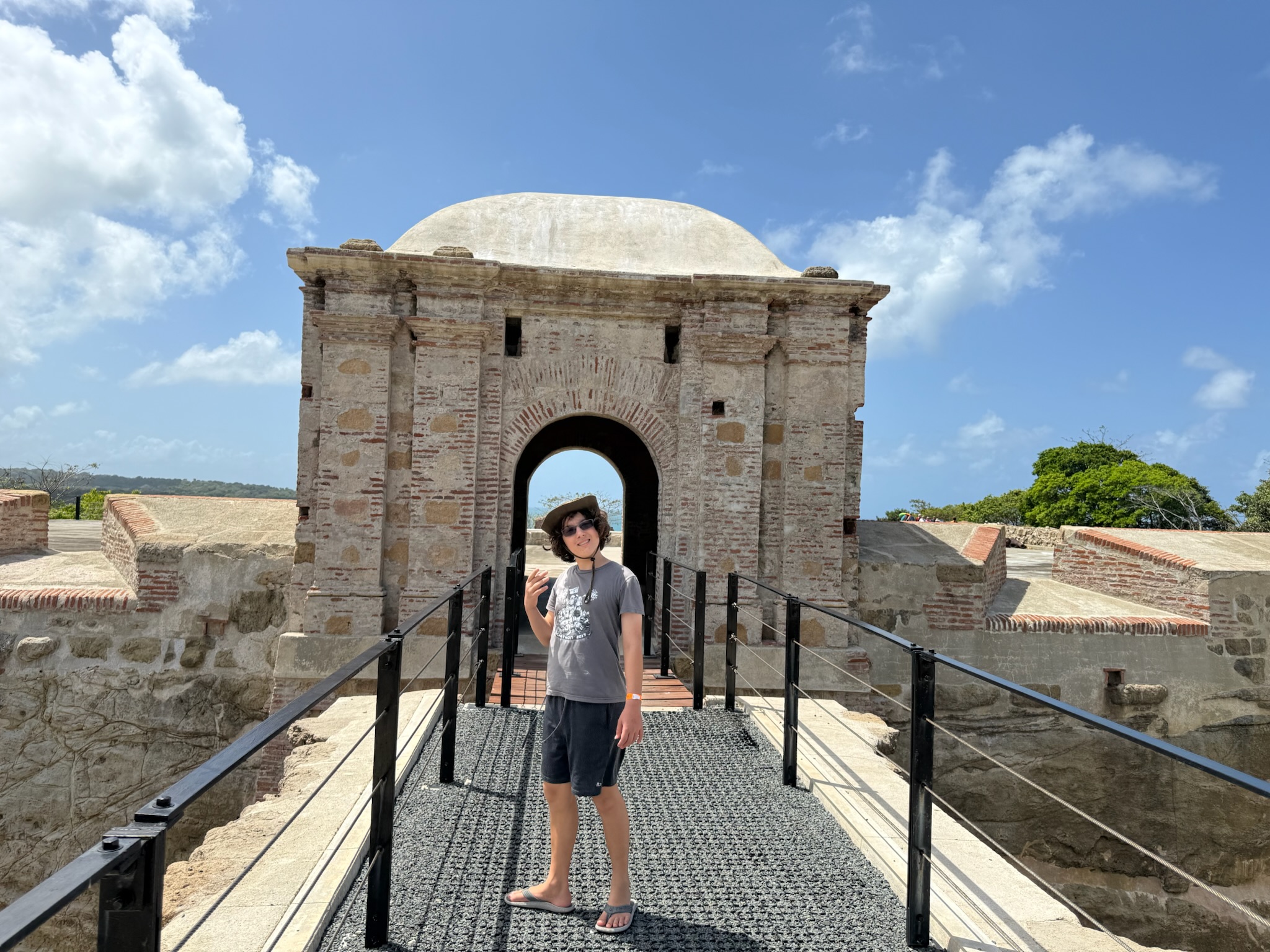
The hornwork appeared to be similar to the luntette, but rectangular in shape instead of a semi-circle. The hornwork was the secondary line of defense for attacks from the city, and was also probably lined with cannons back in the day.
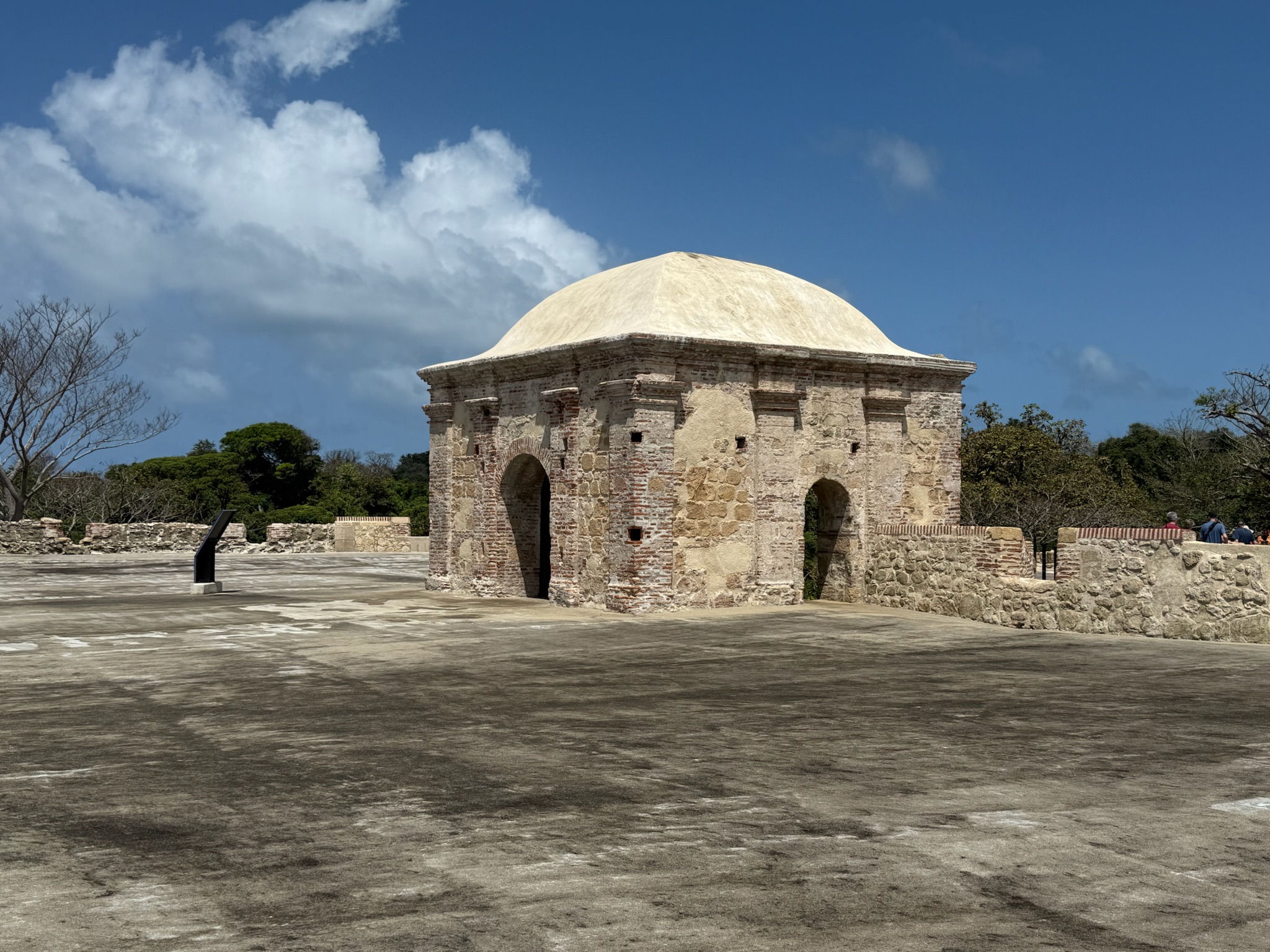
Here was the view of the mouth of the Chagras from the hornwork (and was pretty much the same view from the lunette).
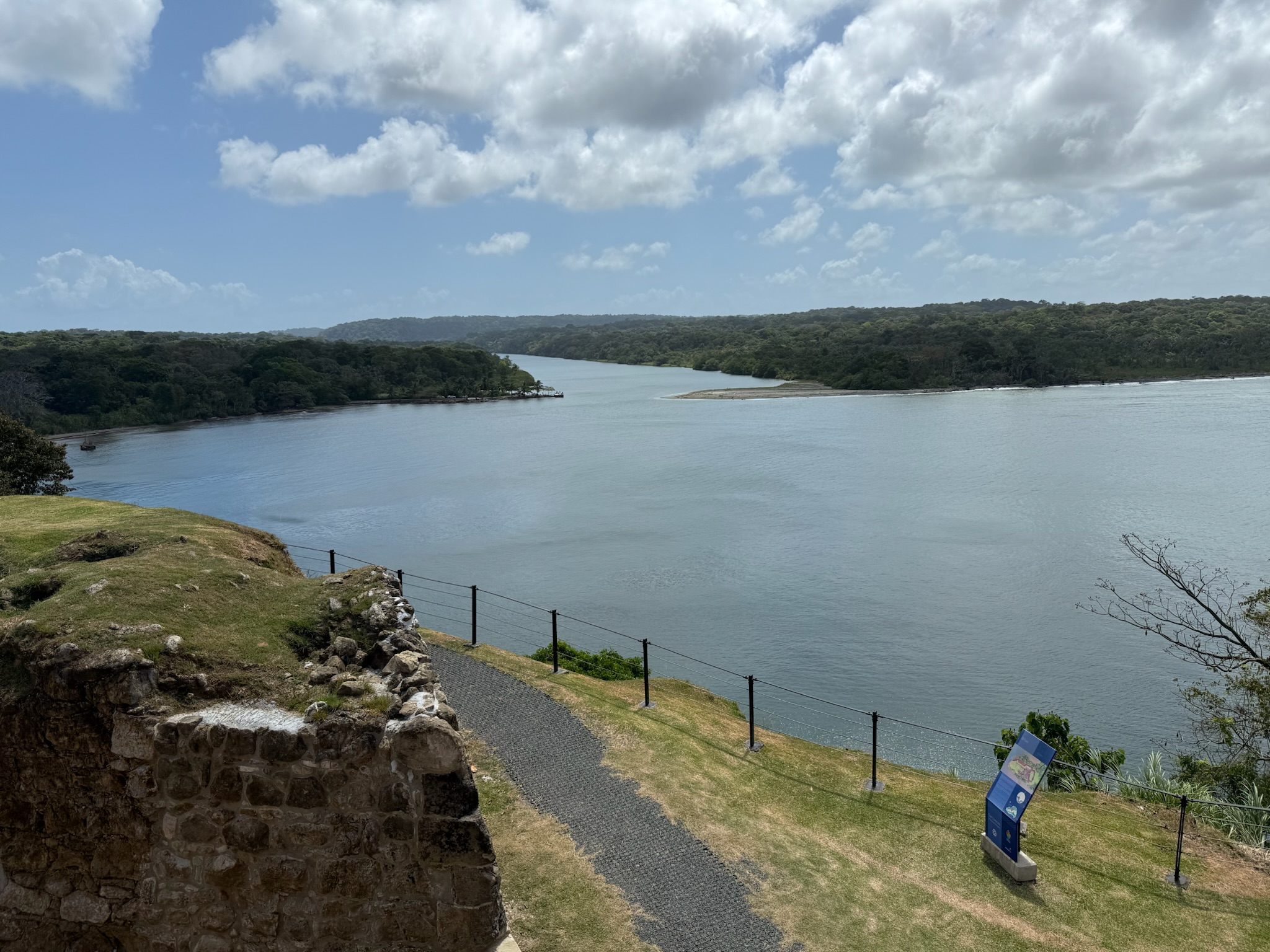
From the hornwork, we could look down onto the parade ground, which was the courtyard that comprised the rest of the fort. As you can see from the reconstruction underway, the parade ground had once been dotted with buildings. The signs said that one of the buildings being re-constructed was the home/office of the Castellan – the military officer in charge of the fort. The other was an infirmary and barracks for the soldiers. There were small remains of foundations from other structures in the parade ground, as well, that were not visible in this photo.
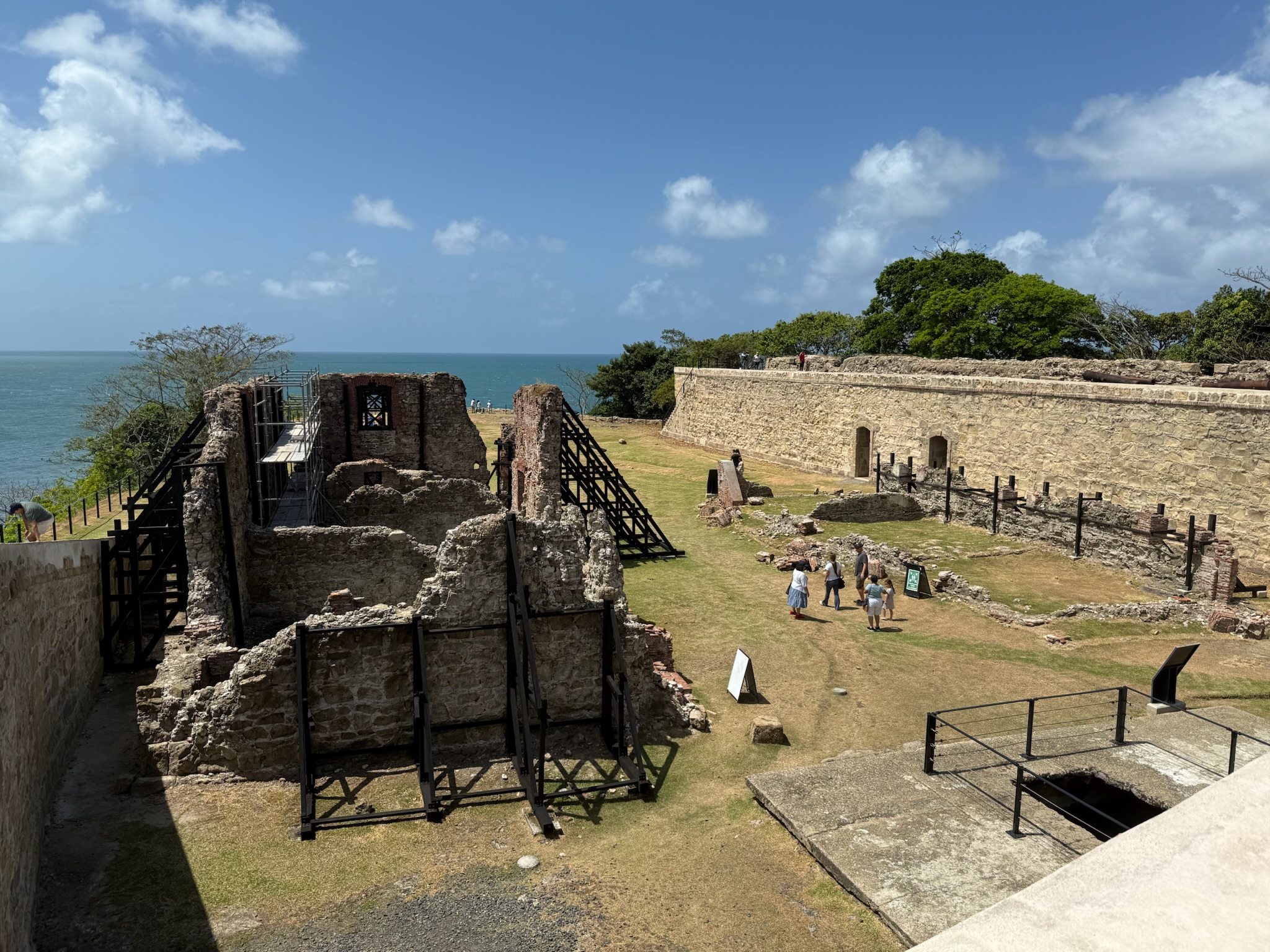
We walked along the top of the building to the end of the wing pictured above. This is the view of the ocean along the edge of the parade grounds.
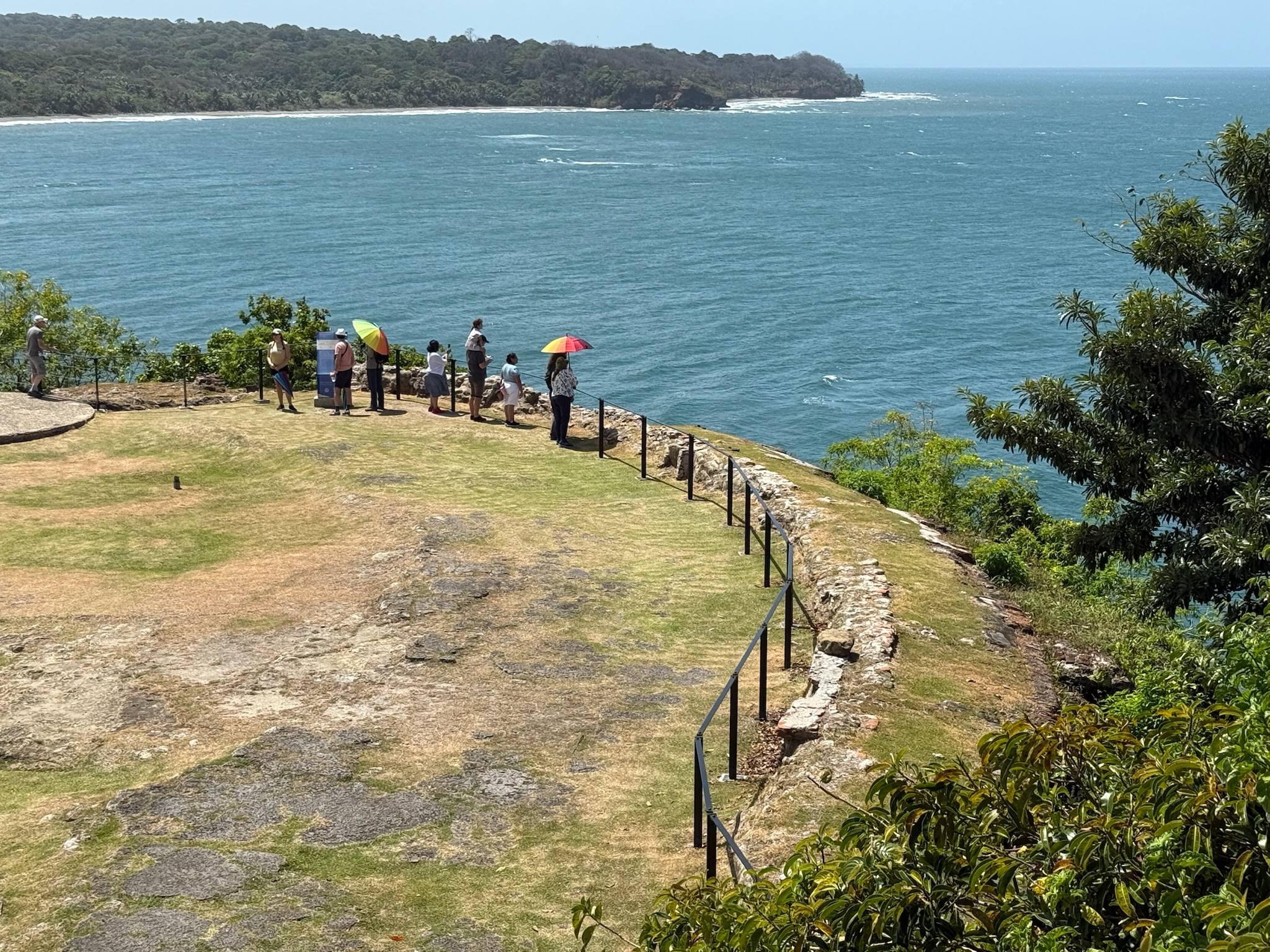
From there, we descended to the parade ground. Here is a photo looking back at the fort from the parade ground’s ocean edge.
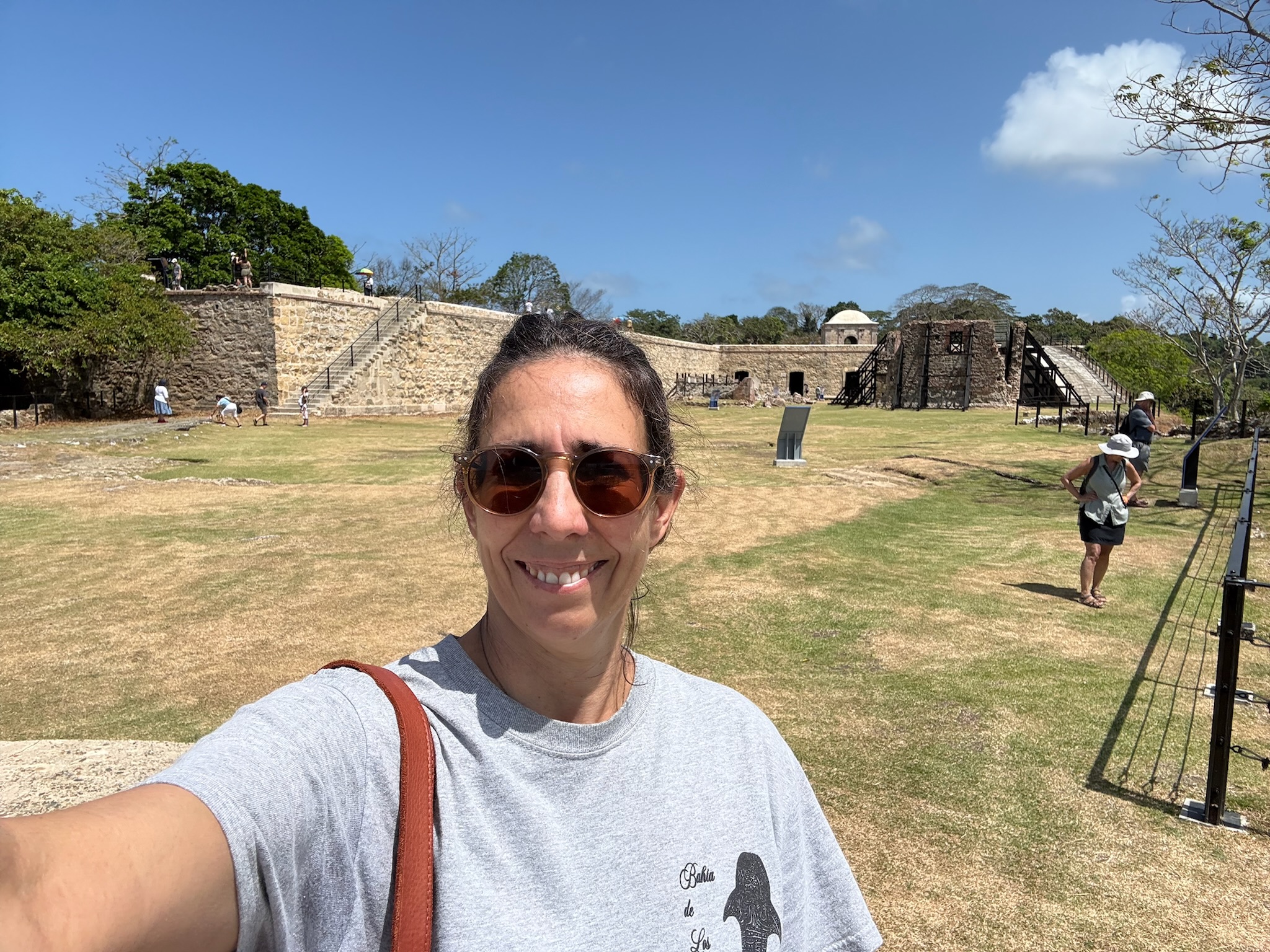
We headed back to the building and wandered through the rooms, corridors and dry moat on the ground level. The signs said they were primarily used for barracks and storage. Some of the rooms were long, some small and some merely hallways.
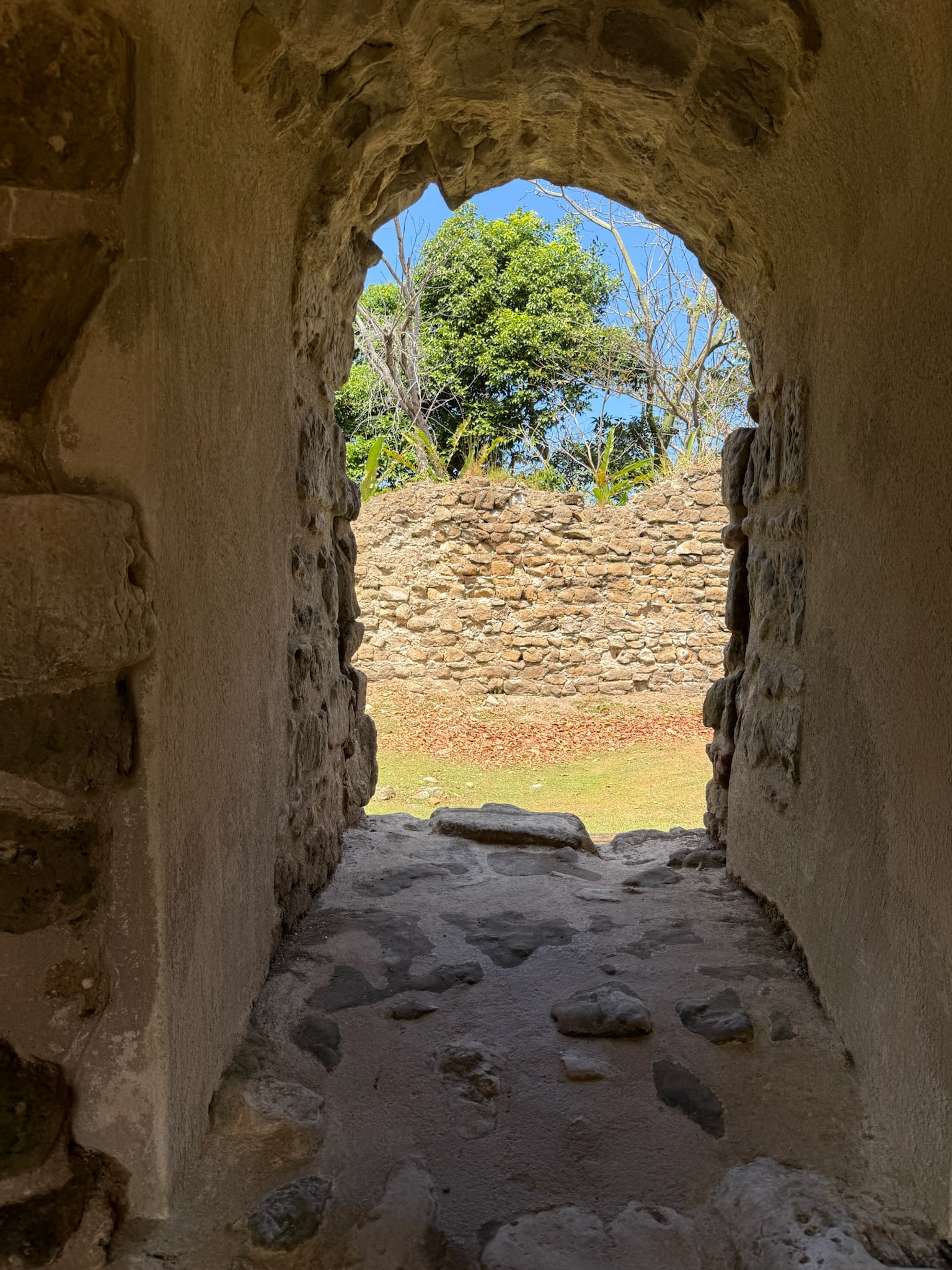

Several of them had exhibits, with most signs in both Spanish and English, though some were only in Spanish. Many of the exhibits contained mementos, such as old maps and drawings.
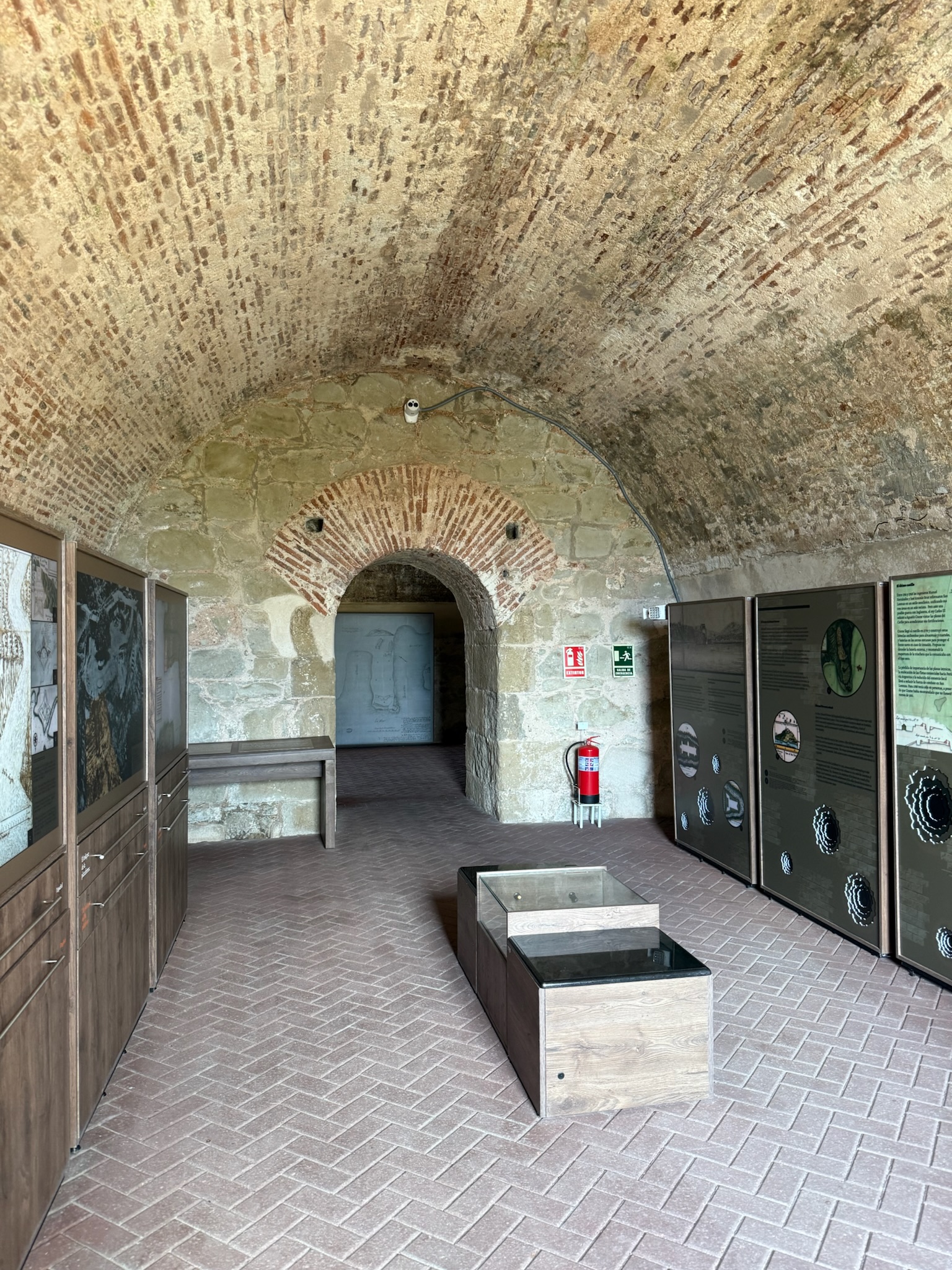
It sounded like the first iteration of the fort was built with “perishable materials” that didn’t hold up well to mother nature, so it already falling apart when the first attack occurred, and thus easily destroyed. The Spaniards apparently made better building material choices in subsequent iterations — these stone vaults were allegedly bombproof.
It sounds like the Chagras villagers included imported laborers (possibly even slaves). The villagers were apparently used as reserve military personnel when needed. The homes in the village were made of cane or quincha (a mix of mud and plaster) and had palm or banana leaf roofs.
Once this fort was no longer needed for defense, it was used as a prison for a while, then abandoned. The adjoining town remained inhabited until the US took over the canal construction. The fort/town were incorporated as part of the US canal zone, and the villagers relocated.
View as we were leaving the fort, heading towards the parking lot — the parking lot is to the right, the high battery to the left.
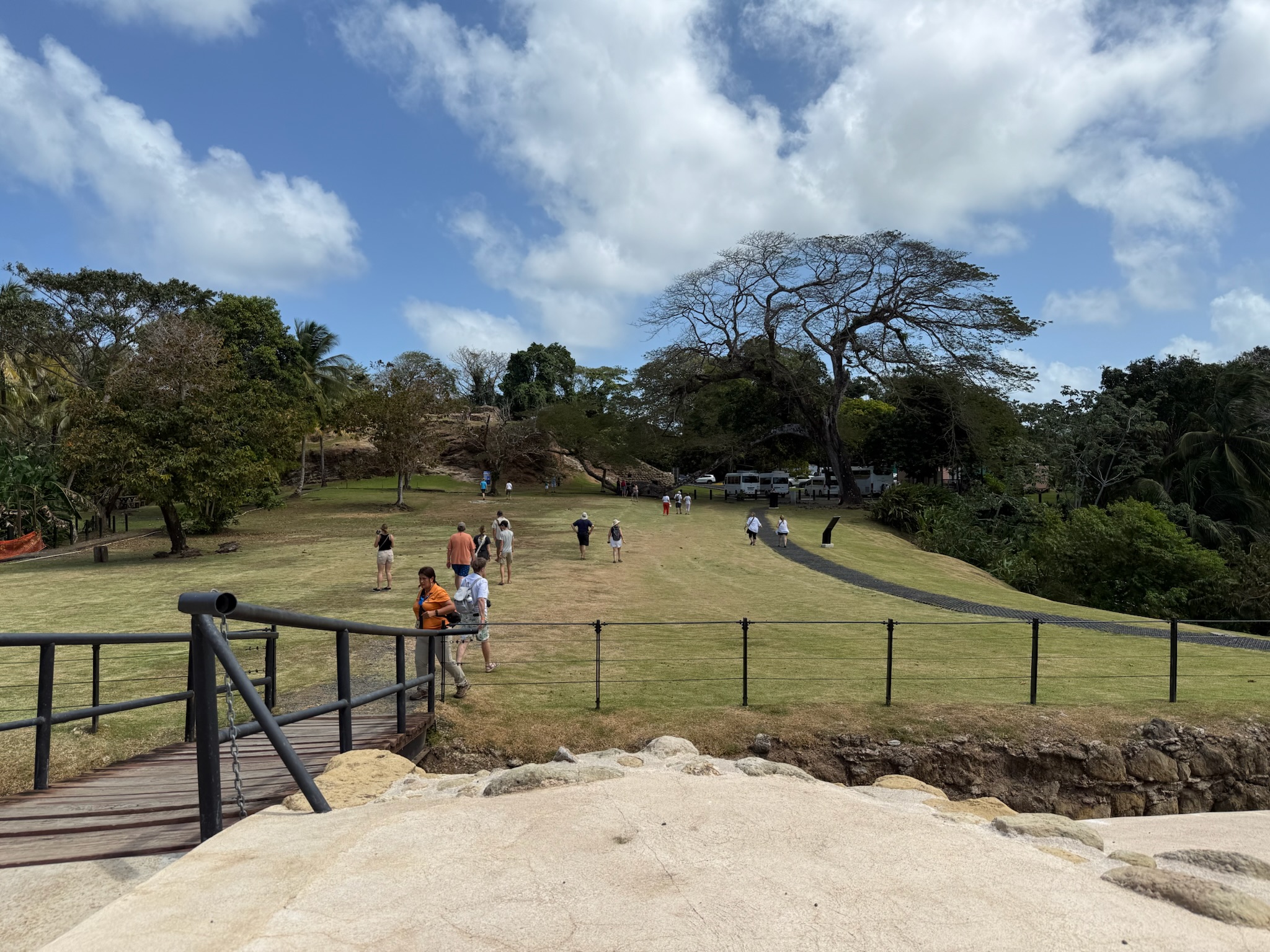
The last stop was the high battery, built ten-meters above the ground.
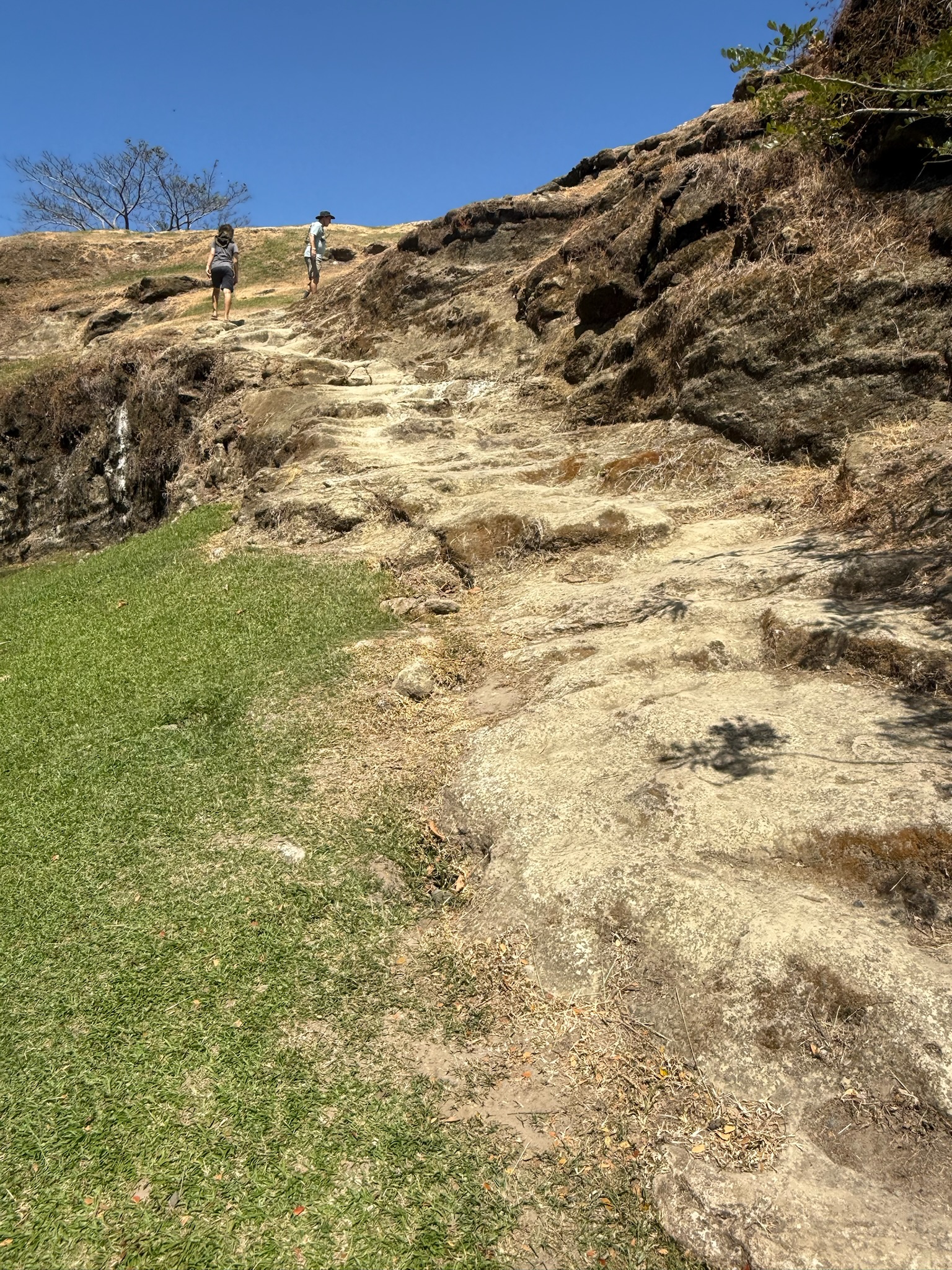
It had been a separate fortress with its own moat and gunpowder store.
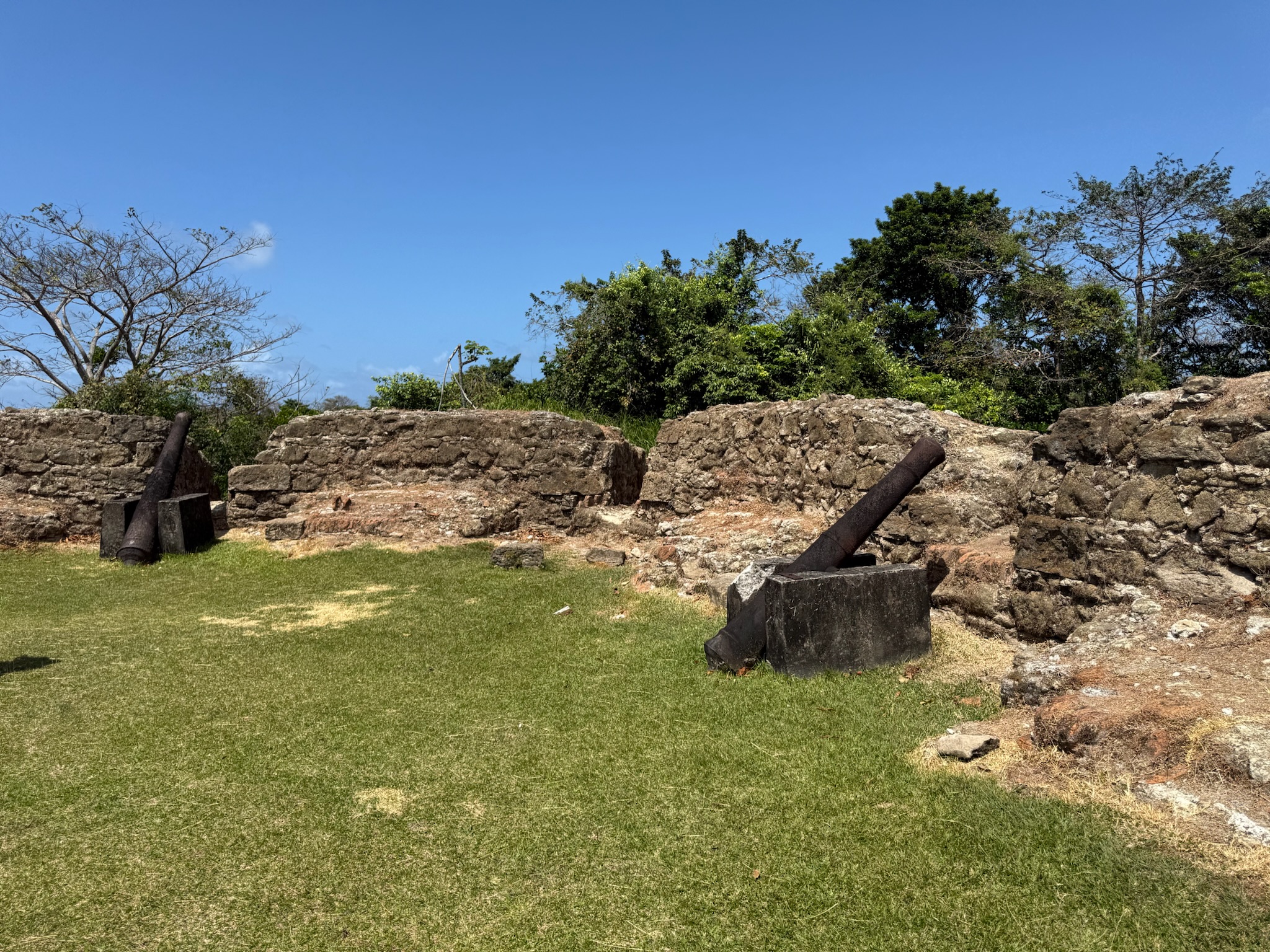
There was a nice view of the main fort , so back in the day, they could have seen if the main fort was being attacked.
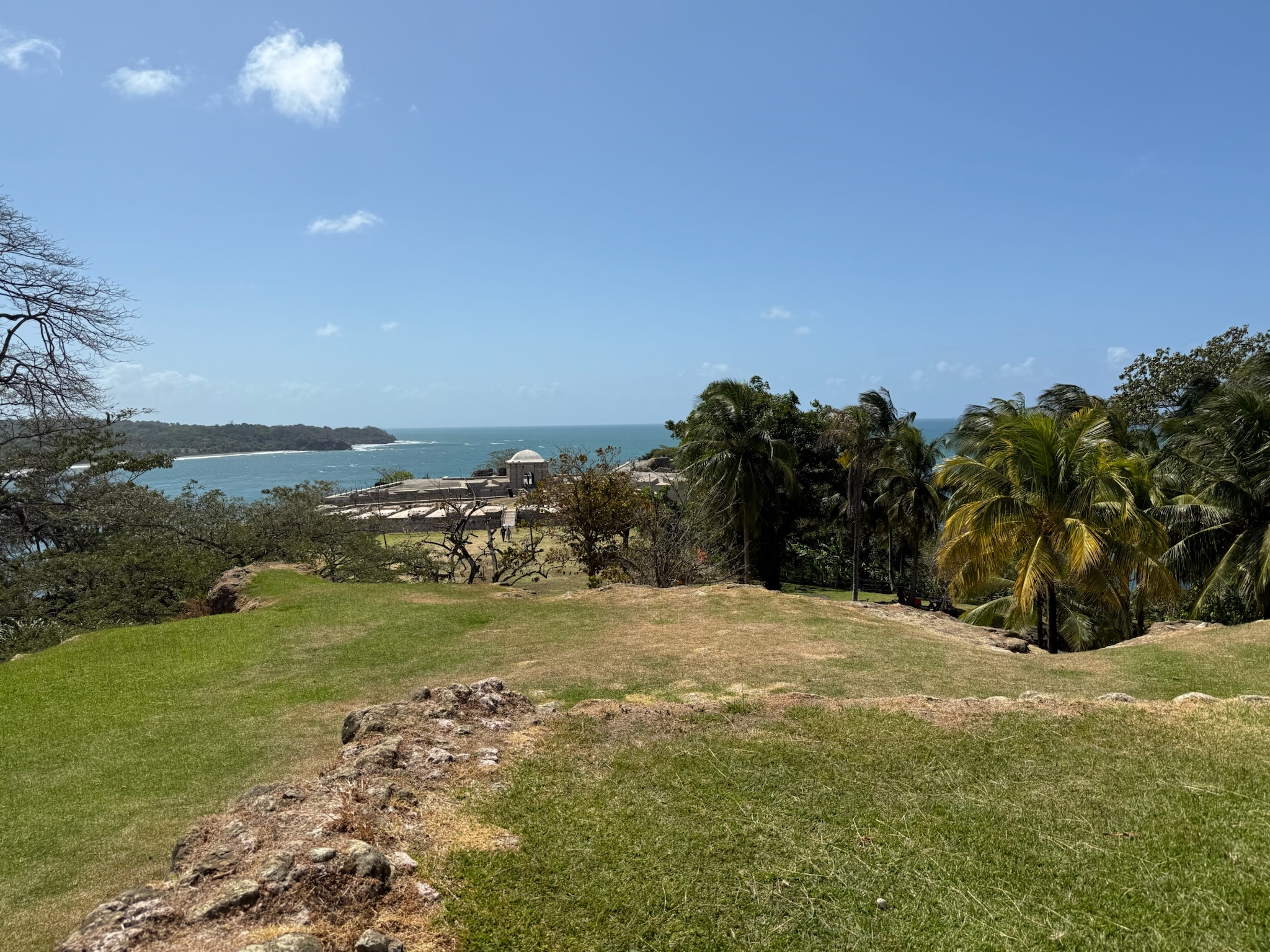
Once we’d finished touring the castle, we headed back to the marina. In the evening, Eric and Keith played another round of Civilization online with other people in the marina.
